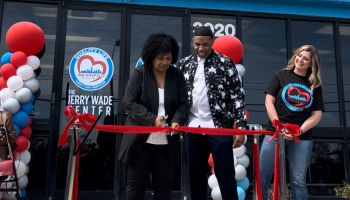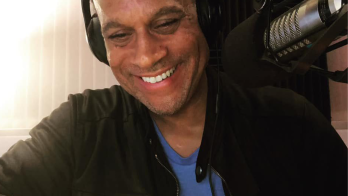By Boyce Watkins, PhD
As March Madness approaches, millions of people across America will be glued to their TV sets in order to witness the amazing athleticism of college athletes from a plethora of universities. Many, if not most of the leading athletes we see on the court will be African American, and it’s not uncommon to see a game where all 10 of the guys on the court are black. Black athletes stand out in college basketball and football primarily because of all the little LeBron James wannabes in the hood, some of whom will never grow to be more than six feet tall.
Many black athletes take what some consider to be the ultimate gamble: trading in nearly all of their educational opportunities in exchange for a lottery ticket that only goes to one man out of a thousand. It’s not a wise trade, to be sure. It is also part of the skewed reality of little black boys influenced by media that is obsessed with black male athletic prowess. Images of Carmelo Anthony tattooed from head-to-toe, standing next to Amare Stoudemire after being traded to the New York Knicks serve as fuel to the fire of hoop dreams that typically end up turning into nightmares. Hip-hop culture, mixed with mass marketing of African American athletes, has created a community where every black boy wants to dribble a basketball, throw a football, or bust rhymes for a living.
As many of us already know, most of these basketball fantasies never come to life. Far too many of these men end their athletic careers between the ages of 17 and 24 (depending on when they finally realize they aren’t good enough for the next level), and end up in the ranks of thousands of uneducated African American males who make up the highest unemployment rate of any race/gender group in the entire United States. They may also become valuable commodities for the prison industrial complex, where black men are as common as the metal bars that keep them encased in the only place where the Constitution actually allows slavery to exist.
One of the primary beneficiaries of the “Great Black Male Athletic Illusion” is the NCAA. After being given exemptions from American anti-trust law which allow them to control the labor rights of athletes, the NCAA earns over a billion dollars every year from the athletic labor of college athletes in revenue-generating sports, the vast majority of whom are African American males. This year, the NCAA is set to earn $610 million from the licensing fees coming from ad revenue generated by March Madness alone. Depending on the year, March Madness ad revenue can easily exceed money earned from the entire post-season of every other major professional sport. It is regularly ranked in the top three, and ad spots for the NCAA championship game cost over one-third the price of an ad for the Super Bowl.
Between 2000 and 2009, the NCAA earned over $4.5 billion in ad revenue from March Madness. Additionally, the ad income for CBS online content from March Madness has surpassed the $30 million dollar mark. If the players from March Madness and their families were allowed to evenly split the money being earned from advertising revenue by itself, they would walk away with an average of $790,000 per player, with the top players earning as much as $10 million, just for this one tournament. This does not include millions earned during the regular season, as well as revenue earned from concessions, merchandising, video games, and the like.
The $790,000 in average economic contribution to the ad revenue pool for March Madness would be more than 15 – 20 times greater than the cost of attending even the most expensive universities in America. Therefore, the argument that players are getting a fair trade by receiving a college scholarship is beyond the bounds of silly. Making matters worse, as a college professor for the last 17 years, I can tell you that the professional athletic schedules of college athletes in revenue generating sports makes it extremely difficult for these students to go to class or be a normal part of the campus environment. If education were a top priority, then students would not be asked to miss class regularly to play nationally-televised games on ESPN.
The multi-billion dollar class action lawsuit being filed against the NCAA by Oscar Robinson, Ed O’Bannon and many other former athletes is a great start to making things right with the NCAA. For years, the NCAA has been allowed to use athlete images for their own benefit, with a large number of NCAA commentators, coaches and administrators making themselves into millionaires. Unfortunately, American racism shows it’s ugly face in the NCAA’s segregated design: Most of the individuals being paid millions are white, while those earning the money on the court are black. Additionally, many of the black athletes come from homes that are impoverished, and it’s interesting that the nation finds it scandalous when these multi-million dollar commodities are found to have even gotten a tiny taste of the wealth they are generating for other people. It’s as if we as a country have decided that these men don’t deserve to have equal rights.
There was a time when laws were designed to keep African Americans from experiencing the financial rewards from their labor. Today, similar laws are in place with a more subtle and indirect racial impact. It should probably be considered that part of the reason that the American public doesn’t care about college athletes being unpaid is because they see a bunch of black guys who should be happy to get the little they are receiving. The same argument can be used to justify the treatment of a five-year old kid in a Chinese sweatshop. After all, the five-year old doesn’t have to work for a dollar a day, he can go do something else. But at some point in American history, we decided that workers should have the right to demand fair wages, and that we are not a Communist society. But it seems that our American values are readily compromised when it comes to maintaining our addiction to racial oppression, and the NCAA seems happy to lead the way.















